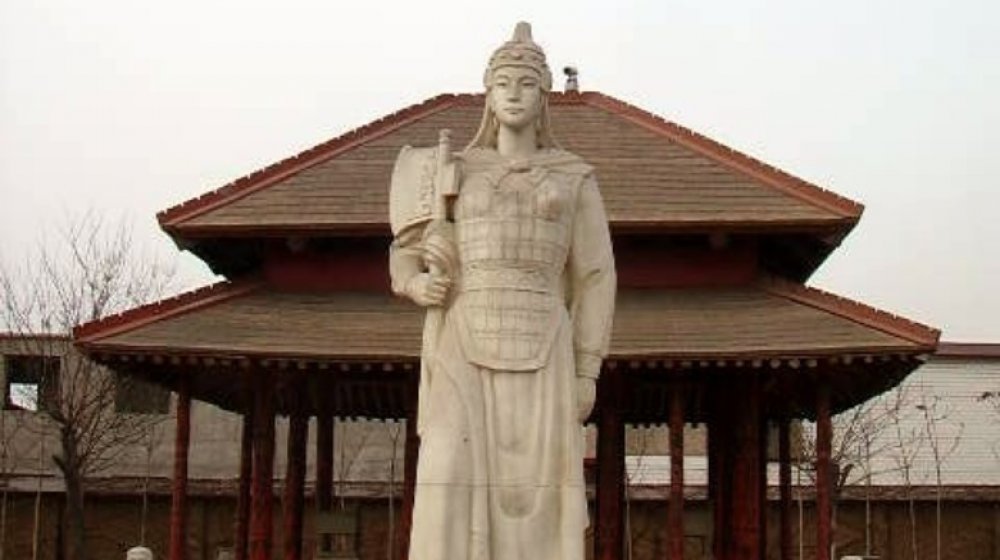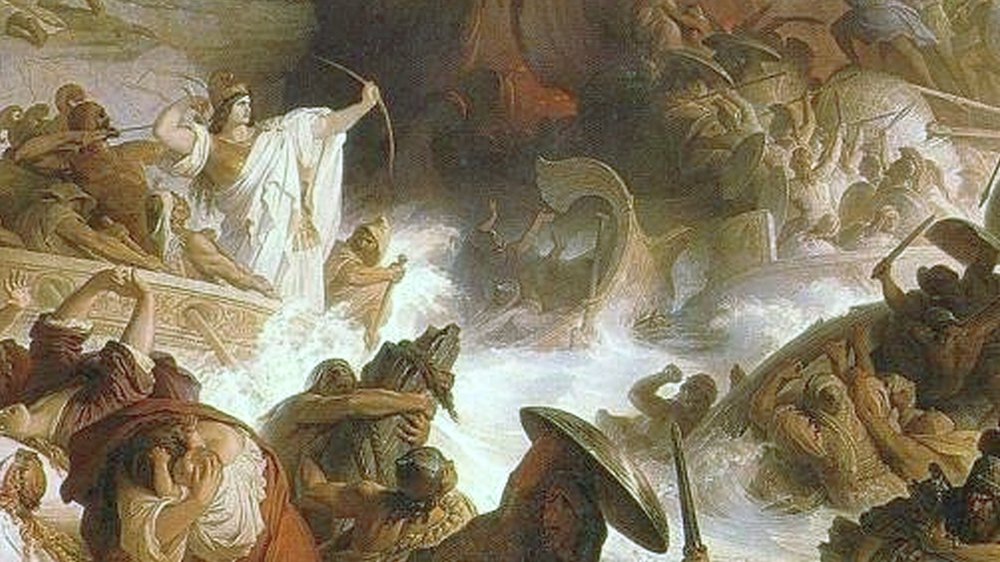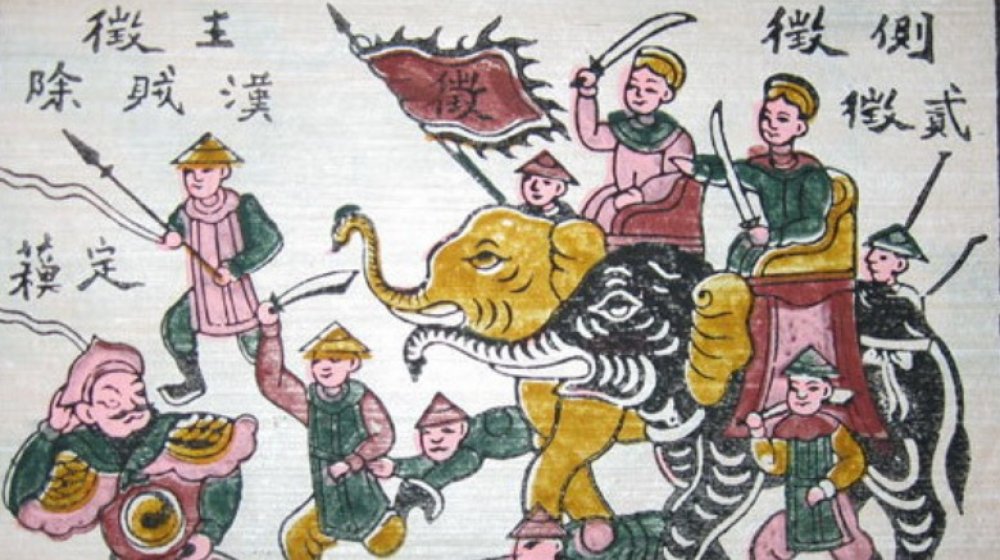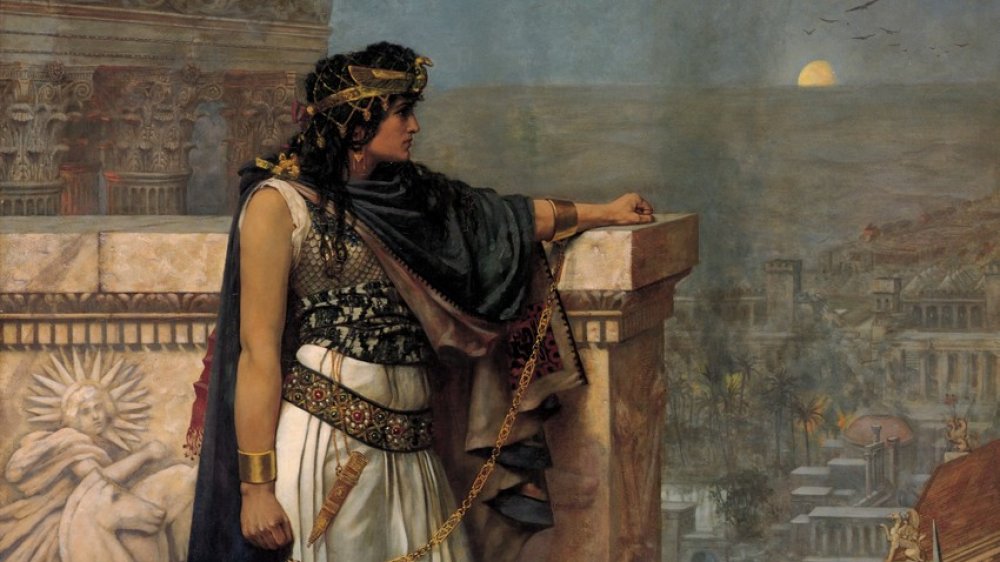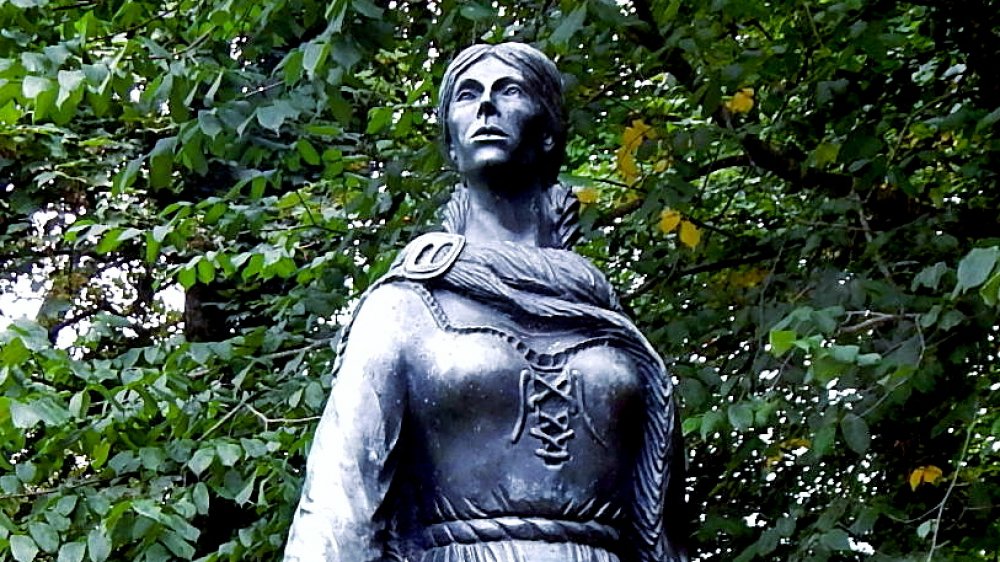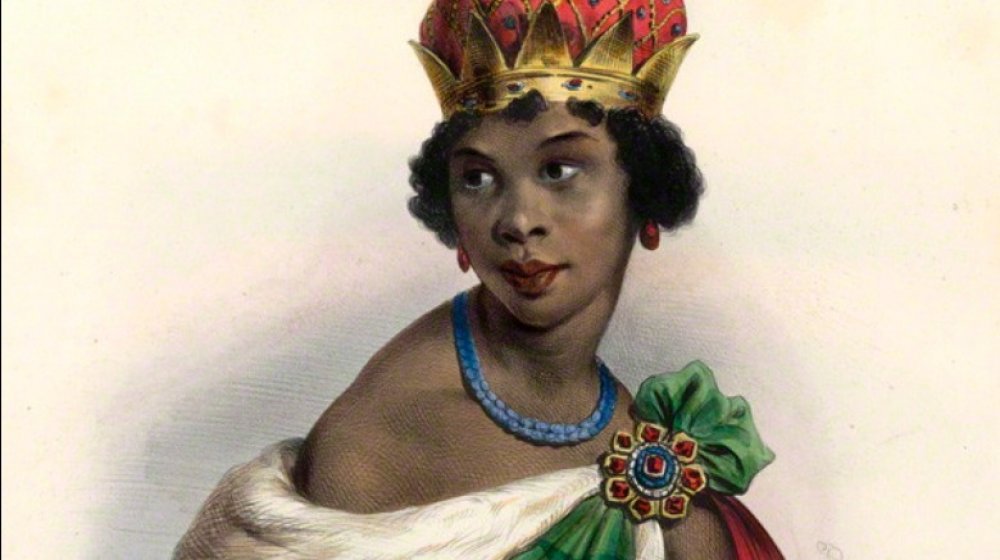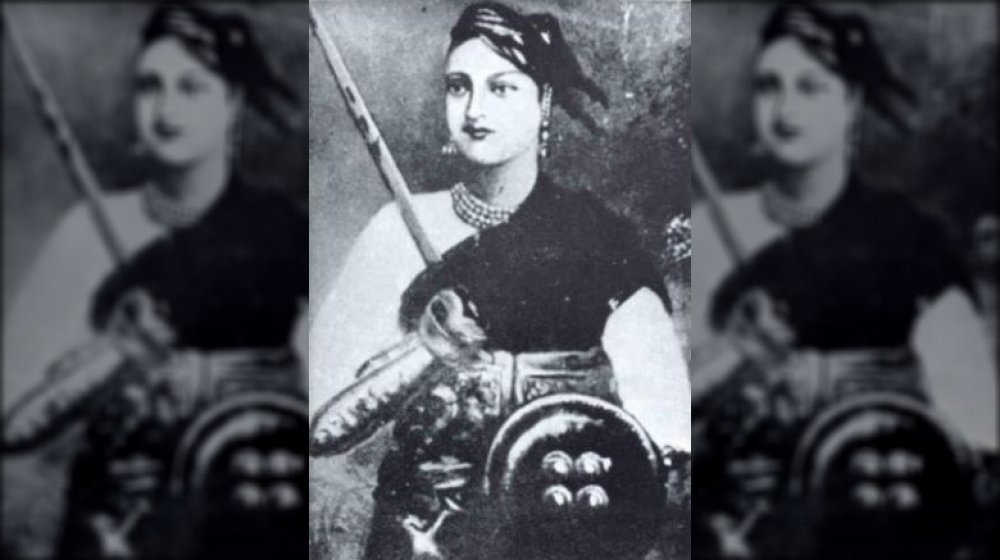The Most Powerful Warrior Queens In History
Warrior kings are a dime a dozen. Everyone who's made it to eighth grade can name Alexander the Great, Julius Caesar, or Genghis Khan. Unfortunately, warrior queens are somewhat rarer, due to the nature of history's treatment of women in power. When they're even allowed power, that is. The good news is, the ones that do exist are cool as hell. They're pirates, priestesses, rebels, activists, and strategists who often found themselves in conflict with some of those famous warrior kings you're more familiar with.
Chances are good you know about Cleopatra, last(ish) of a long line of Greek rulers in Egypt who got tangled up with the Romans before allegedly snaking herself to death. You might know Isabella, who united Spain and funded Columbus' expeditions. You might even know BoudicaBoudica, the Celtic queen who rose up against the Romans. But what do you know about these hardcore conquering queens of Europe, Asia, and Africa?
Fu Hao ruled Shang Dynasty China
The Emperor Wu Ding of Shang Dynasty China ruled in the 13th century BCE and was known to shore up alliances with neighboring tribes by marrying women from those tribes. By most accounts, he had around 60 wives. You would have to be pretty special to stand out among 60 wives, especially over 3000 years ago in a society where women were not particularly encouraged to assume leadership positions. But as Ancient Origins explains, that is exactly what Lady Fu Hao–queen, military leader, priestess, and politician–did to great success.
Relics from the Shang Dynasty reveal the military prowess of Fu Hao, who led campaigns against the enemies of the Shang, including the Tu-Fang, whose generations-long feud with the Shang she ended in a single, decisive battle. Her campaigns against the Yi, Qiang, and Ba tribes were also resounding successes. Additionally, her accomplishments were not just in military matters. While the Shang emperor had total control over ceremonial matters such as religious rituals and sacrifices, relics reveal Wu Ding frequently entrusted these things to Fu Hao, revealing his high opinion of her.
The surest sign of Fu Hao's great power, however, is her insanely lavish tomb, which contained hundreds of bronze weapons and ritual items, thousands of jade, bone, and ivory objects, piles of Shang money, and the remains of people sacrificed to be her servants in the afterlife.
Tomyris of the Massagetae crushed the Persians
Cyrus the Great, who ruled the Achaemenid Empire in the 6th century BCE, is known as one of the most powerful Persians who ever lived, conquering empires left and right. His military might led many to think he was invincible. As it turns out, this invincible emperor was conquered and (probably) killed by an unstoppable queen and grieving mother, Tomyris of the Massagetae.
According to Ancient Origins, the Massagetae were a confederation of horse-riding Scythians from Central Asia, who by the Middle Ages would be known as the Huns (of whom you may have heard). Cyrus and the Persians did not see this small kingdom as any kind of threat, and by tricking the Scythian troops into getting drunk he was able to capture and defeat them with little effort. Among those captured, however was Tomyris' son, who committed suicide while in Cyrus' custody.
A furious Tomyris promptly sent messengers to Cyrus, which were ignored. Tomyris then challenged the Persians to a second battle, and this time simple tricks would not suffice for Cyrus. The Massagetae surrounded the Persians, blocking their escape, and fully routed them. By most accounts, the invincible Cyrus met his end at Tomyris' blade, and she then placed his severed head in a bag full of blood, saying perhaps now he would have his fill of gore. With this amazing one-liner, Tomyris saved her kingdom and avenged her son.
Artemisia of Caria was an unmatched strategist
Following the Greeks' defeat of the Persian Empire at the Battle of Marathon in 490 BCE, the Persian king sought revenge by assembling the largest invasion force the world had seen at that point. And Xerxes is said to have had no greater ally than Artemisia I, the queen regent of Caria, a kingdom in modern-day Turkey. In fact, as the Ancient History Encyclopedia relates, the Greek historian Herodotus thought Artemisia was so cool that later writers criticized him for focusing too much on her.
Artemisia assumed the throne of Caria following her husband's death until their son was old enough to become king. As such, she had no obligation to join Xerxes' forces, but Herodotus said her daring character compelled her. She was renowned for her cunning and shrewd advice to the Persian king, and she would often fly a Greek flag on her ships to disguise herself until she could get close enough to her enemies to gain the advantage of surprise. Artemisia's reputation as a fierce warrior, relentless pirate, and clever strategist led to the Greeks placing a 10,000 drachma bounty on her head. Despite this, she showed unflagging courage against the Greeks in the naval battle of Salamis, a disastrous defeat for the Persians which only Artemisia had argued against engaging in. She's last mentioned being entrusted to lead Xerxes' sons out of Greece to safety.
Teuta of Illyria challenged Rome's command of the sea
The First Punic War was fought between Rome and the north African city of Carthage for 23 long years in the third century BCE. When it was finally over, Rome emerged victorious, having gained control of Sicily and affirming itself as arguably the world power. It should have been the undisputed ruler of the Mediterranean waters at that point. And it almost was. But as Ancient Origins explains, there was someone who disputed it: Teuta, the pirate queen of Illyria.
Teuta became the queen regent of the Ardiaei tribe in Illyria on the Balkan peninsula after her husband, the king Agron, literally died from partying too hard celebrating his successes conquering kingdoms around the Adriatic Sea. Teuta continued her husband's expansionist policies, adding nearby lands to their kingdom, but it was her penchant for piracy that caught the attention of the Romans. Merchants from the Adriatic complained about Teuta's raids so vociferously to the Roman Senate they finally felt compelled to take action.
After Teuta killed or imprisoned every envoy they sent, the Romans declared war against her, which she only lost after being betrayed by her allies. She surrendered to the Romans in the city of Risan, and legend says she subsequently cursed the city and leapt off a cliff to her death. To this day, Risan is the only city on the bay not to have success in seafaring.
Amanitore of Meroe built pyramids and fought Romans
The ancient city of Meroe, the capital of the Nubian kingdom of Kush, was ruled by a matrilineal succession of warrior queens known by the title of Kandake, the source of the modern name Candace. These women were frequently the sister of the king of Kush and had the power to hold their own court and lead forces in battle. As reported by Ancient Pages, possibly the best known of the Kandakes was Amanitore, who ruled Meroe from about 1 BCE to 20 CE.
Amanitore is frequently mentioned by ancient sources as a co-ruler with the Kushite king Natakamani, but the sources are ambiguous about whether she was his mother or his wife. As Kandake, Amanitore wielded great power within Kush, including the ability to depose the king or force him to commit suicide if she so desired. Amanitore and Natakamani were the last great builders of the Kush empire, constructing or restoring over 200 pyramids during their reign.
Contemporary Greek and Roman sources often interpreted the title Kandake as a name, and so it can often be difficult to know which queen they intended, but either Amanitore or her predecessor Amanirenas was the one-eyed Nubian queen described by the historian Strabo who fought a five-year war against the Romans, and Amanitore might even be the Candace mentioned in the New Testament Book of Acts whose official met the Philip, one of the Twelve Apostles.
The Trung sisters fought for Vietnamese independence
In the first century CE, Vietnam was ruled by Han Dynasty China, and Thi Sach, a lord in North Vietnam, had been assassinated by a Chinese general for conspiring with other nobles to revolt against their Chinese overlords. According to Britannica, it was in 39 CE his widow, Trung Trac, took leadership of the resistance movement together with her sister, Trung Nhi. The Trung sisters then led a march of the Vietnamese aristocracy against the city of Lien Lau, which forced the Chinese commander to evacuate. Within a year, the Trung sisters had marched on and assumed command of 65 citadels in Northern Vietnam. At this point, the two sisters proclaimed themselves to be the co-queens of an unnamed state stretching from southern China down to central Vietnam.
Unfortunately, the Trungs' revolutionary army was made up of untrained nobles with no supplies and no support from the common people, so they stood no chance against the full force of the Chinese army, who decisively overcame them near modern-day Hanoi. The sisters were forced to retreat and eventually drowned themselves to avoid capture. As leaders of the first Vietnamese independence movement, however, they are venerated as national heroes and are credited with the relatively higher position in society Vietnamese women have historically held compared to the more patriarchal China and India.
Zenobia of Palmyra's empire rivaled the Romans'
In the third century CE, the city of Palmyra in modern-day Syria was one of the wealthiest and most powerful cities in the world. Sitting at the crossroads between the Roman Empire to its west and the great kingdoms of Asia to its east, Palmyra was a desert oasis that was a must-stop for anyone traveling from one of those places to the other. It was also a client state of the Roman Empire, a fact which grated on Zenobia, the warrior queen regent of the Palmyrene Empire. As National Geographic explains, Zenobia assumed the throne of Palmyra when her husband Odaenathus–superficially loyal to Rome, even avenging them against invading Persians, but inwardly wanting to establish himself as a great independent monarch–was murdered by a treacherous relative.
Zenobia declared herself regent, claimed control of the lands her husband had just taken from the Persians, and executed the conspirators who assassinated Odaenathus. She also took advantage of this being a time of weakness for the Romans, who were struggling with conflict on every frontier of their empire. By 270 CE, Zenobia had annexed all of Syria, much of Anatolia, and the whole of Egypt, while fighting off Persians and making the Romans look increasingly like chumps. Zenobia's Palmyrene Empire seemed unstoppable until a new Roman emperor, Aurelian, proved to be a more effective leader than his predecessors and finally–barely–managed to defeat the great queen.
Mavia of Arabia ruled the desert from horseback
The semi-nomadic Arab tribes of the southern Syrian deserts in the fourth century CE did not keep written records of their rulers, in part because so many of their people were illiterate. Instead, their history was preserved through oral tradition passed down through the generations. One such story is of Mavia, a queen said to be more powerful than any man and second only to Zenobia among Arabian women.
As Ancient Origins explains, Mavia–known in Arabic as Mawiyya–married al-Hawari, the last king of the Tanukhids, a semi-nomadic confederation of Arabs in southern Syria, and ruled with him as co-regent. When al-Hawari died in 375 CE, Mavia took over as full-on ruler, and when the Roman emperor Valens thought he could easily conquer Mavia's people and convert them to his brand of Christianity, Mavia led her people in a revolt against the Romans that would spread through much of the Middle East.
Mavia enjoyed great success by withdrawing from the city and engaging with the Romans in the desert, a terrain they were unfamiliar with, and employing guerrilla warfare tactics the organized imperial forces weren't used to. Mavia's skill as a horsewoman and leader of cavalry were legendary, and she proved capable of defeating the Romans in open combat as well, ultimately leading a humiliated Valens to call for a truce. As a further sign of respect, the Romans would later ask Mavia for help in repelling invading Goths.
Æthelflæd of Mercia brought the fight to the Vikings
While there are many misconceptions about the Vikings, they are rightly renowned as some of the fiercest invaders that have ever lived. Much of England was under the rule of Danish Vikings by 878 CE. And of the many resistance forces met by the invading Danes, few were as fierce as those led by Æthelflæd, the eldest daughter of Alfred the Great and the queen of the English kingdom of Mercia.
According to the BBC, Æthelflæd rose to power as the tenuous peace in the English Midlands established by her father came to an end when he died. She worked in conjunction with her husband, lord of Mercia, and her brother, lord of Wessex, to bring the fight to the Vikings. Æthelflæd's power only grew as her elderly husband's health worsened, and she gained a reputation as a master builder and negotiator, as well as a military leader. Her raids against Danish encampments led to the Vikings attacking Mercia, but Æthelflæd and her brother combined their respective mights to demolish the Vikings in the Battle of Wednesfield, dramatically shifting the balance of power in the Midlands.
When Æthelflæd's husband died in 911, she became the sole ruler of the Mercians and never remarried, as she refused to let any man become lord over her and the lands she had secured for her people.
Grace O'Malley was Ireland's pirate queen
Gráinne Ní Mháille–thankfully, for English speakers, also known as Grace O'Malley–was an 16th century Irish clan leader, legendary warrior, pirate queen, and political activist who fought for decades to keep the English out of Ireland and even looked Queen Elizabeth I in the eye and refused to bow to her. As History Ireland explains, O'Malley lived in a time just after Henry VIII had declared himself king of Ireland and the British crown was encroaching more and more on the island. Her father was the lord of the O'Malley dynasty, a seafaring clan of western Ireland. When young Grace asked to accompany her father on an expedition to Spain, he joked her hair would get tangled in the ship's ropes. She subsequently cut off her hair to force her father's hand, earning herself the legendary nickname, "Gráinne Mhaol" ("Grace the Bald").
After the death of her first husband (for which O'Malley is said to have exacted revenge), she began her campaign as pirate queen to maintain control of her coastal property. Using a fleet of as many as 20 ships, she raided the coastline and fomented rebellion against the Tudors for about 40 years until she petitioned Elizabeth for the release of kidnapped family members. The meeting of the two queens is somewhat legendary, but unfortunately negotiations brought an end to O'Malley's days as a pirate and rebel leader.
Nzinga of Ndongo fought the Portuguese slave trade
The era following Columbus' "discovery" of America may have been an Age of Exploration for Europe, but it was an age of colonization, oppression, and slavery for much of the rest of the world. The slave trade was devastating for West Africa, and by 1580 English and French encroachment on Portugal's share of the western slave market caused the Portuguese to look elsewhere for an unchallenged supply of slaves. As Black Past explains, this search eventually brought them to the south-central area today known as Angola, then the home of the Mbundu people. In 1622, the Portuguese sought a peace conference with the king of the Mbundu; he sent in his place his sister, Nzinga.
Nzinga was aware she had to thread the needle of retaining Portugal as a trading ally without letting the Portuguese dominate her people the way they had other nations. To show how she demanded equality, when the Portuguese representative refused her a chair, she used one of her own assistants as a chair for the length of the meeting. Nzinga would go on to become queen after her brother's death and she would lead her army and a coalition of rival states in a 30-year war against Portugal, personally leading troops well into her 60s. The Portuguese repeatedly tried and failed to capture Nzinga, and the rebellion she started lasted long after her peaceful death in 1663.
Lakshmi Bai of Jhansi led a rebellion against the British
Lakshmi Bai was born sometime between 1827 and 1835 into a family of the priestly caste in northern India. She was raised in the household of a local ruler alongside boys, where she learned sword fighting, horseback riding, and martial arts, all unusual for a girl at that time. According to Britannica, while still quite young, she married the maharaja of Jhansi, an independent princely state. Unfortunately, the maharaja soon died without having produced an heir, and the British governor in India refused to recognize his adopted heir as legitimate. The British Empire took this opportunity to annex Jhansi, but the now 22-year-old Rani (queen) Lakshmi Bai wasn't having it.
Lakshmi Bai refused to surrender Jhansi to the British, and after having been officially named regent of the state, she joined the 1857 uprising against the British, soon becoming one of the leaders of the mutiny. The Rani led her armies in fierce battle against the forces of the East India Company, resisting capture even as her allies fell all around her. Escaping defeat and regrouping, Lakshmi Bai led the successful capture of the treasury and arsenal in the fortress of Gwalior. Forging on from there to confront a British counterattack, Lakshmi Bai was killed in battle wearing men's clothes, but she remained a powerful symbol of resistance for Indian nationalists against the British Raj.

